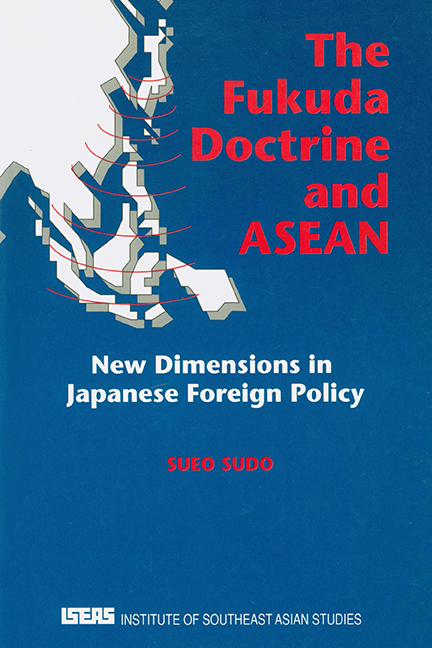Book contents
- Frontmatter
- Dedication
- Contents
- List of Tables
- Preface
- Abbreviations
- Introduction
- chapter one A Framework for Analysing Japanese Policy Towards Southeast Asia
- chapter two Post-war Japan's Re-entry into Southeast Asia
- chapter three Japan's Policy Towards Regional Development
- chapter four External Challenge and Changing Japan-Southeast Asia Relations; 1975–77
- chapter five A Changing Southeast Asia in Japanese Politics
- chapter six Formulating the First Doctrine in Japanese Foreign Policy
- chapter seven Japan's ASEAN Policy, 1977–87
- chapter eight Conclusion
- Appendices
- Bibliography
- Index
- THE AUTHOR
chapter six - Formulating the First Doctrine in Japanese Foreign Policy
Published online by Cambridge University Press: 21 October 2015
- Frontmatter
- Dedication
- Contents
- List of Tables
- Preface
- Abbreviations
- Introduction
- chapter one A Framework for Analysing Japanese Policy Towards Southeast Asia
- chapter two Post-war Japan's Re-entry into Southeast Asia
- chapter three Japan's Policy Towards Regional Development
- chapter four External Challenge and Changing Japan-Southeast Asia Relations; 1975–77
- chapter five A Changing Southeast Asia in Japanese Politics
- chapter six Formulating the First Doctrine in Japanese Foreign Policy
- chapter seven Japan's ASEAN Policy, 1977–87
- chapter eight Conclusion
- Appendices
- Bibliography
- Index
- THE AUTHOR
Summary
In this chapter we will look at how Japanese policy-makers perceived the interests and positions of the major actors, and interacted and shaped the process of policy-making. Two specific questions will be posed in evaluating the relationship between the ideas of the decision-makers and the outcomes of the policy-making process: (1) why did Japan adopt the Fukuda Doctrine in 1977 rather than earlier or later? and (2) why did it include the three provisions rather than other possibilities? Focusing on a process of “reasoning”, this chapter will shed light on how policy-makers saw the old ideas as no longer appropriate, and then on how they came up with different ideas. Since idea formation is closely related to the actual process of policy-making, we are going to delineate, first of all, each policymaker's ideas, and then examine the dynamics of policy-making.
IDEAS OF THE POLICY-MAKERS
Each of the perspectives employed thus far identifies an element of the policy-maker's situation as an influence on policy change. The fourth and the last perspective, then, focuses on the substantive ideas held by top policy-makers as necessary or sufficient elements of explanation for behaviour sometimes depends on policy-makers, perceptions, beliefs, and values; as well as objective situations. How did the idea of the “Doctrine” emerge, which Japan had never before proclaimed? What did the Doctrine intend to achieve? Where did the idea come from and who promoted it? To answer these questions, we now turn to the concept of ideas because the cognitive perspective will shed some light on the content of policy change.
In the process of forging the Doctrine, the four MFA officials and Prime Minister Fukuda, supported by his secretary, Hisashi Owada, informally constituted the final decision-making unit within the Japanese Government. Of the four Foreign Ministry officials directly involved in the policy-making process, Yosuke Nakae and Takehiko Nishiyama seem to have played a central role at all stages of policy formulation.
- Type
- Chapter
- Information
- The Fukuda Doctrine and ASEANNew Dimensions in Japanese Foreign Policy, pp. 151 - 185Publisher: ISEAS–Yusof Ishak InstitutePrint publication year: 1992

